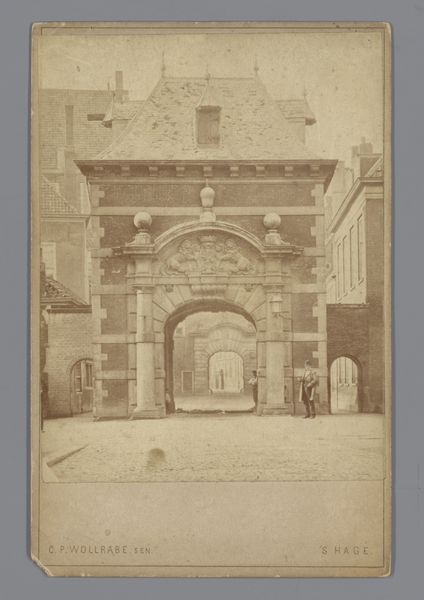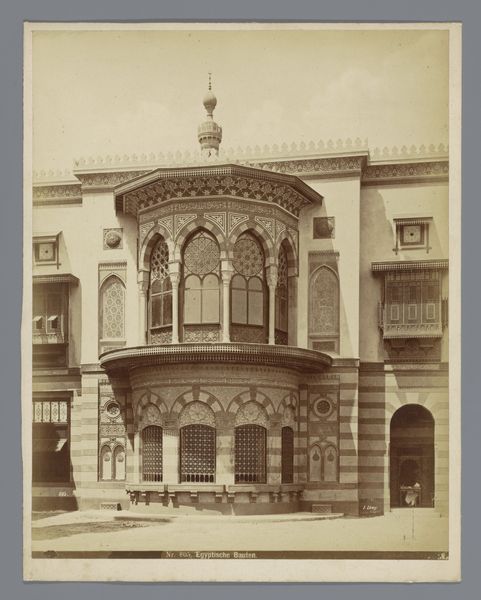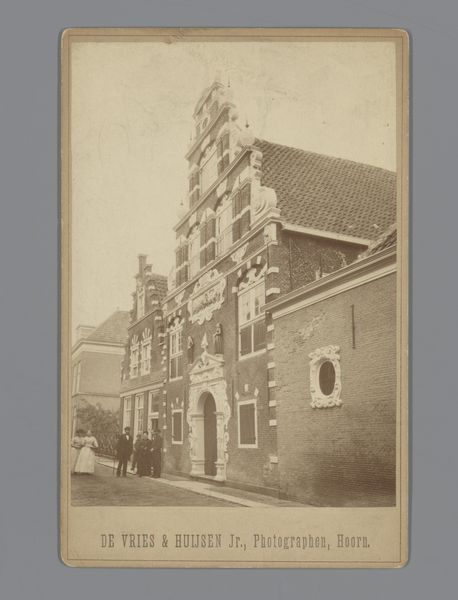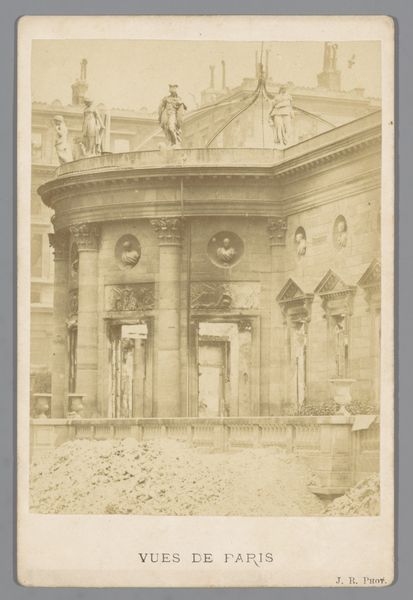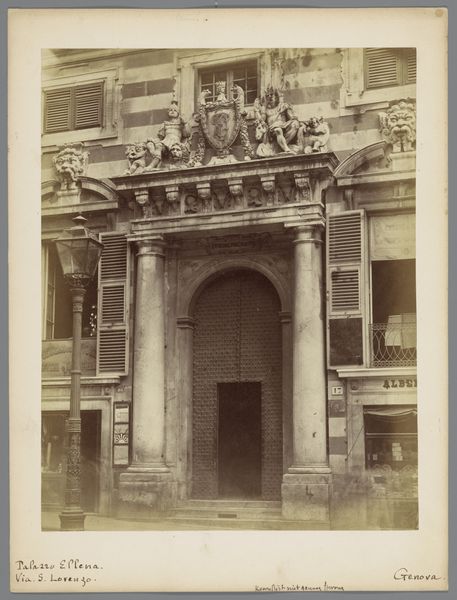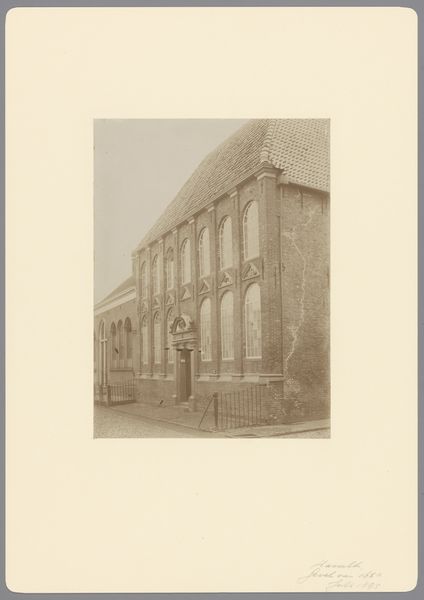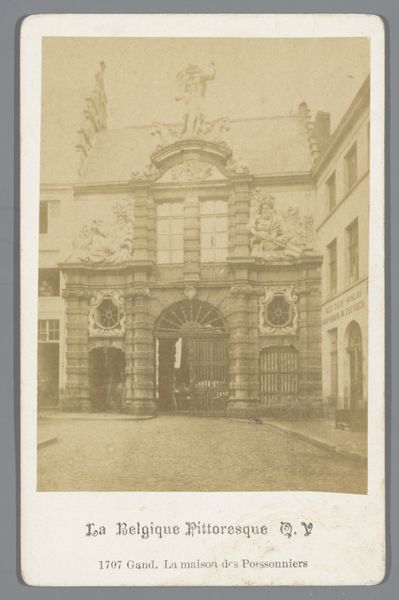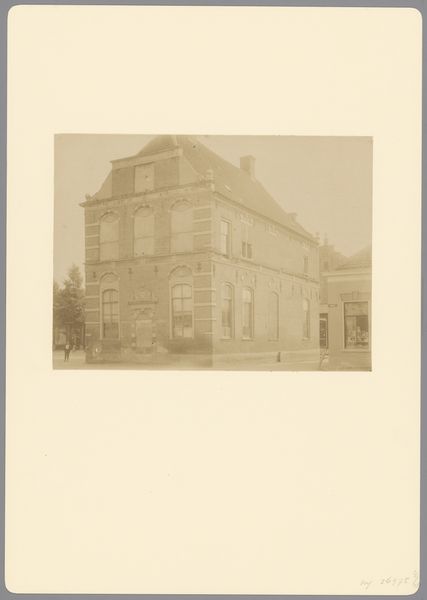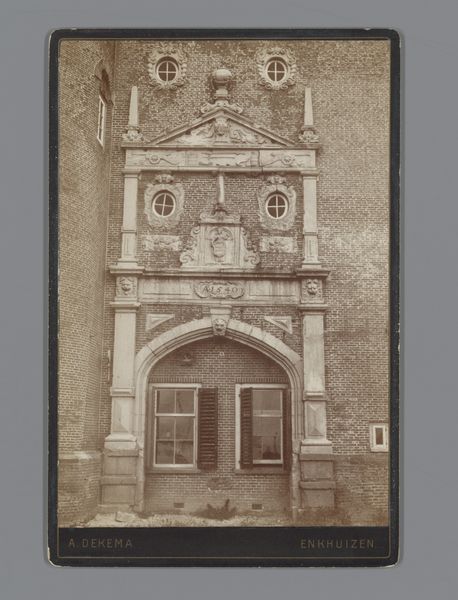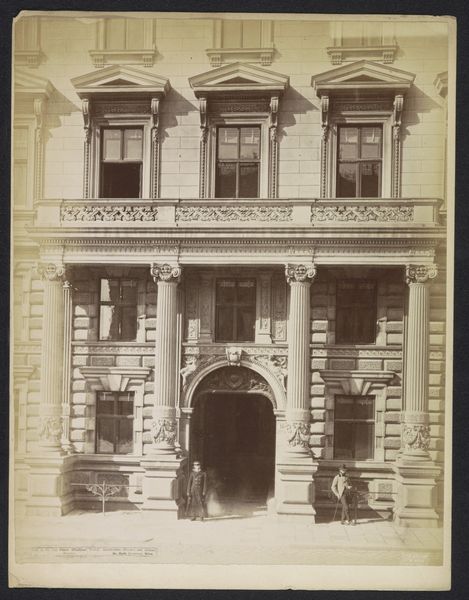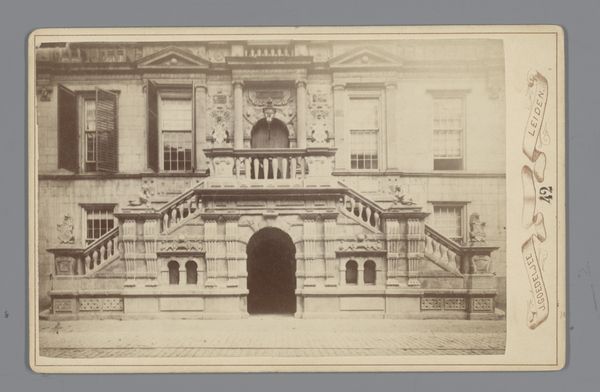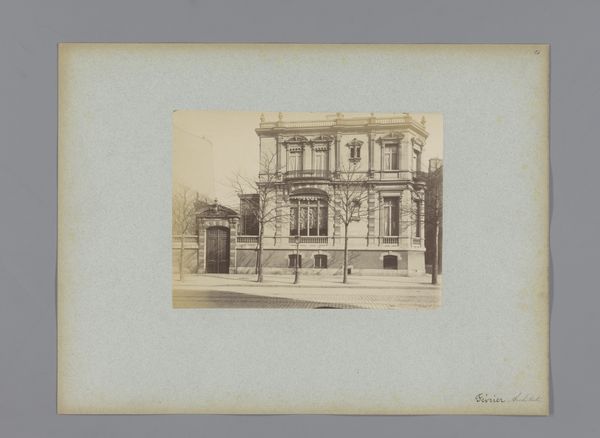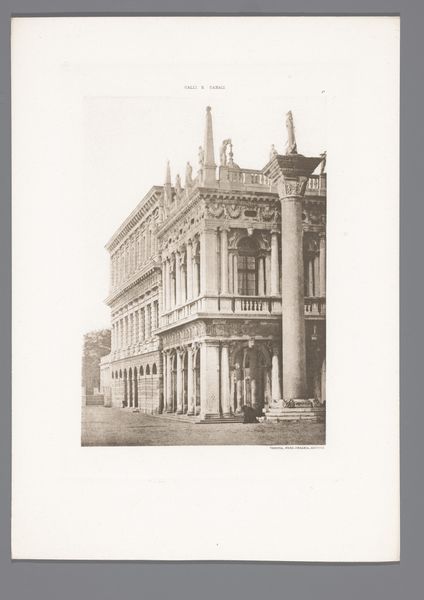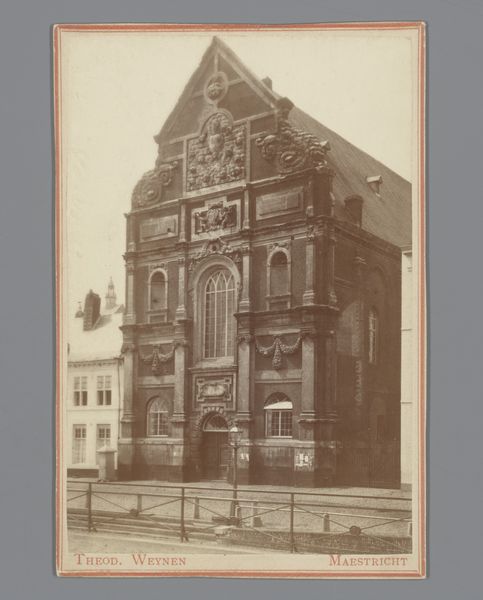
photography, architecture
#
street-photography
#
photography
#
cityscape
#
architecture
Dimensions: height 167 mm, width 109 mm
Copyright: Rijks Museum: Open Domain
Curator: Let’s examine this photograph titled “Detail met ingang van de Wijnhuistoren te Zutphen,” taken between 1888 and 1897 by Joh. Evers. What strikes you first? Editor: A formidable sense of civic pride, and of a history etched in brick. There is also an element of public theater here—stairways, elevated walkways, shadowed portals. Curator: The architectural details themselves offer a rich semiotic field. Notice how the photograph focuses primarily on the ornate entrance to the Wijnhuistoren. The composition emphasizes verticality, reinforcing a sense of monumentality through the careful use of line and form. Editor: The symbolism is thick as well: the Weinhaustoren was a civil assembly hall. I see references to classical structures in the pillars. Do you agree that a certain ambition and reach of the city's history speaks through it? The entrance looks both protective and imposing. Curator: Precisely, the architectural elements are designed to convey power and permanence, the arches acting as frames, guiding the viewer’s eye to a point of entry or perhaps exclusion. We see those intriguing classical faces, half-hidden in shadow above the porticoes. Editor: They might allude to ancient ideals, wisdom, or even ancestral spirits overseeing civic activities. Curator: Indeed. Furthermore, the brickwork’s rhythmic pattern contrasts sharply with the smooth planes of the doorways, creating visual tension. It invites a closer structural reading. Editor: Those carefully placed figures add an important human element, acting almost as a scale against the sheer size of the edifice, and the children add the element of innocence to all that pomp and symbolism. Curator: And beyond their function within the composition, their clothing styles give an additional period flavor that firmly dates the photograph. Editor: It’s remarkable how the interplay of light and shadow shapes the emotional tenor of the image, suggesting weight and the long continuity of burgher culture. Curator: Looking closely at its composition has, for me, highlighted not only the building's structural qualities, but also its ability to engage the viewer actively. Editor: And from my perspective, considering the iconography has brought the people closer. Now, what remains are not just buildings, but civic ambitions.
Comments
No comments
Be the first to comment and join the conversation on the ultimate creative platform.
